Perennials are pretty, but when it comes to big-time garden color, annual plants add a lot of personality and visual appeal. Sadly, they can also be time-consuming and costly. Fortunately, many stunning flowering annuals will reappear each year if allowed to go to seed.
These wonderful self-seeding plants not only save time, they also save money. Allowing your annuals to self-seed means that you can skip over the big expense of new plants every year and still have a garden that’s bursting with color and personality.
Allowing your self-seeding plants to go to seed is one of the easiest ways of planting new seeds. All you have to do is resist the urge to pull those plants until their seed pods have ripened and released their seeds. Nature will do the rest! Here are 31 stunning self-seeding annuals to save time and money in your garden.
Our Favorites
Poppy
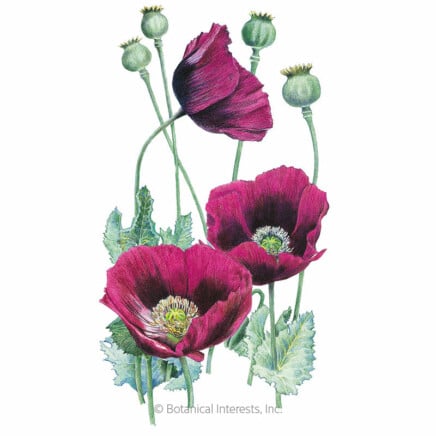
Lauren’s Grape Bread Seed Poppy Seeds
Sweet Alyssum
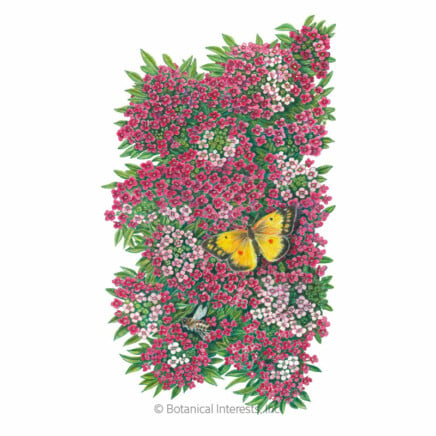
Rosie O’Day Sweet Alyssum Seeds
Bachelor’s Button
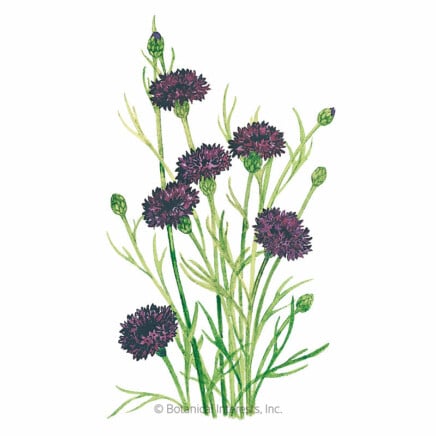
Black Magic Bachelor’s Button Seeds
Cosmos
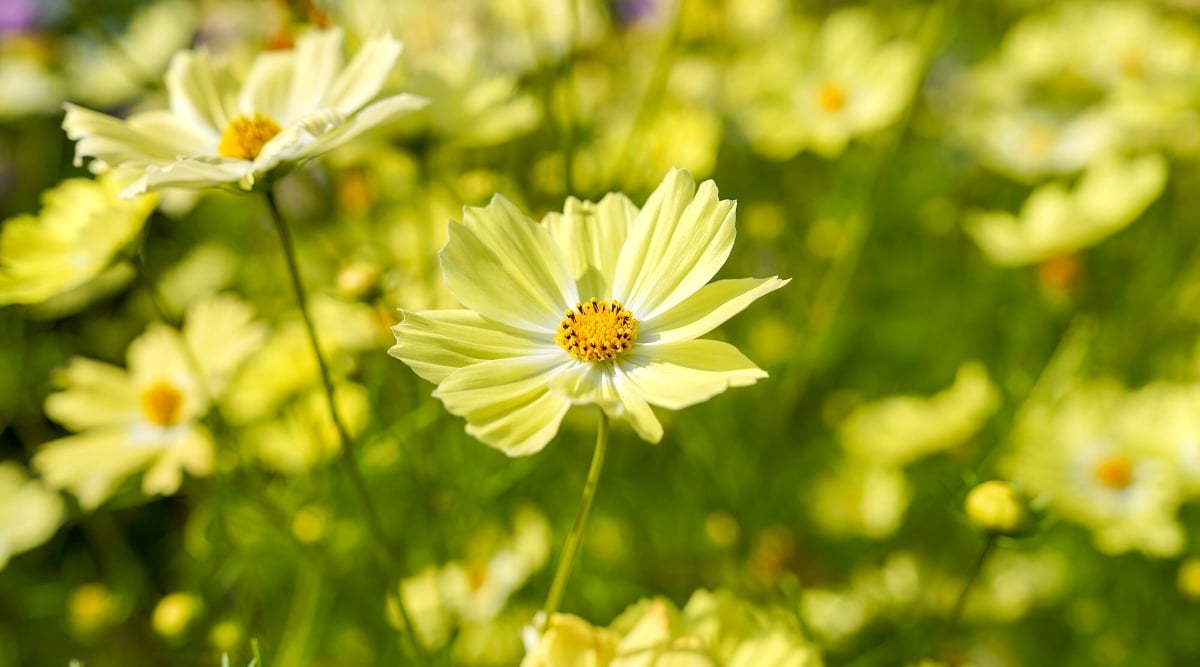
|
|
botanical name Cosmos |
|---|---|
|
|
sun requirements Full sun |
|
|
height 1’-6’ |
|
|
hardiness zones 2-11 |
Cosmos are wonderful flowers that serve many purposes. They are highly attractive to pollinators and will have butterflies visiting in droves to feast on their sweet nectar. These pretty flowers are low maintenance and create a lot of color with their long blooming season which begins in early summer and lasts until the first frost.
If you want an all-purpose flower, cosmos make excellent cut flowers, as well. Cutting your cosmos will encourage them to produce even more blooms. Plant these seeds in full sun and keep the soil moist until they are established. Once established, they are drought-tolerant and require very little maintenance.
Morning Glory
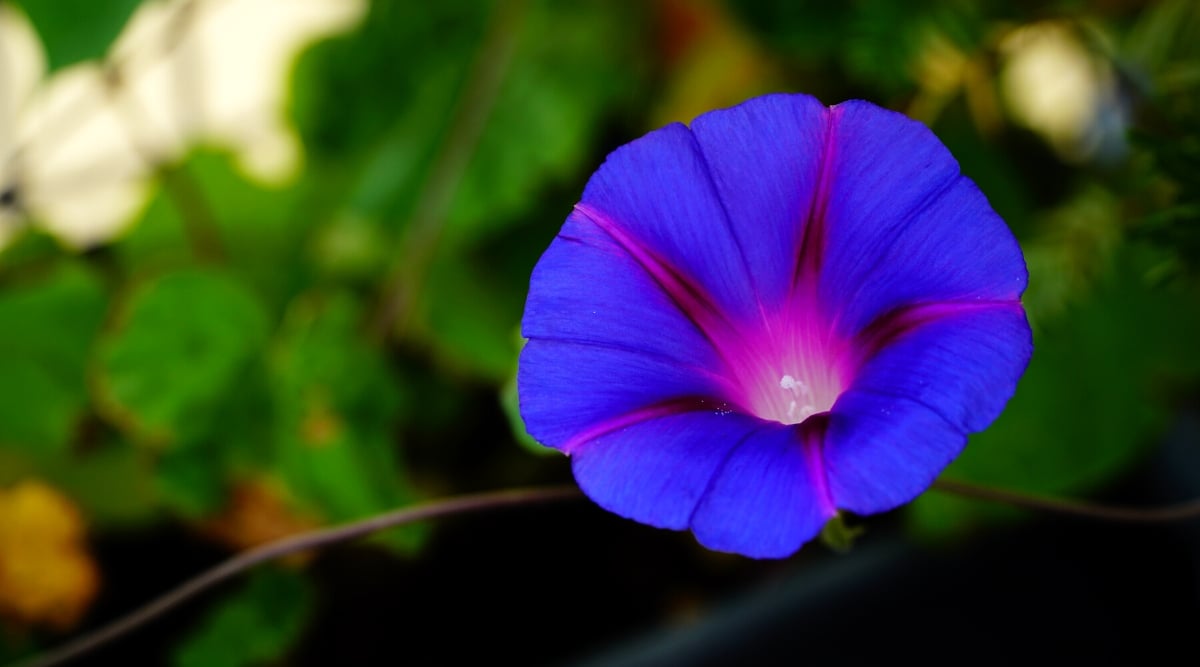
|
|
botanical name Ipomoea |
|---|---|
|
|
sun requirements Full sun to partial shade |
|
|
height 15’ |
|
|
hardiness zones 2-11 |
I love a good flowering vine, and morning glory makes it easy to plant and walk away. In fact, you may want to deadhead this vine before it goes to seed because of how prolifically it reseeds itself.
Morning glories show off their beautiful flowers in the cool mornings, closing when temperatures rise. On cloudy days, morning glory truly shines, as the lack of sun exposure will keep them open all day. ‘Heavenly Blue’ is a luminous variety with cornflower blue, trumpet-like blooms with a cool white throat.
Poppy
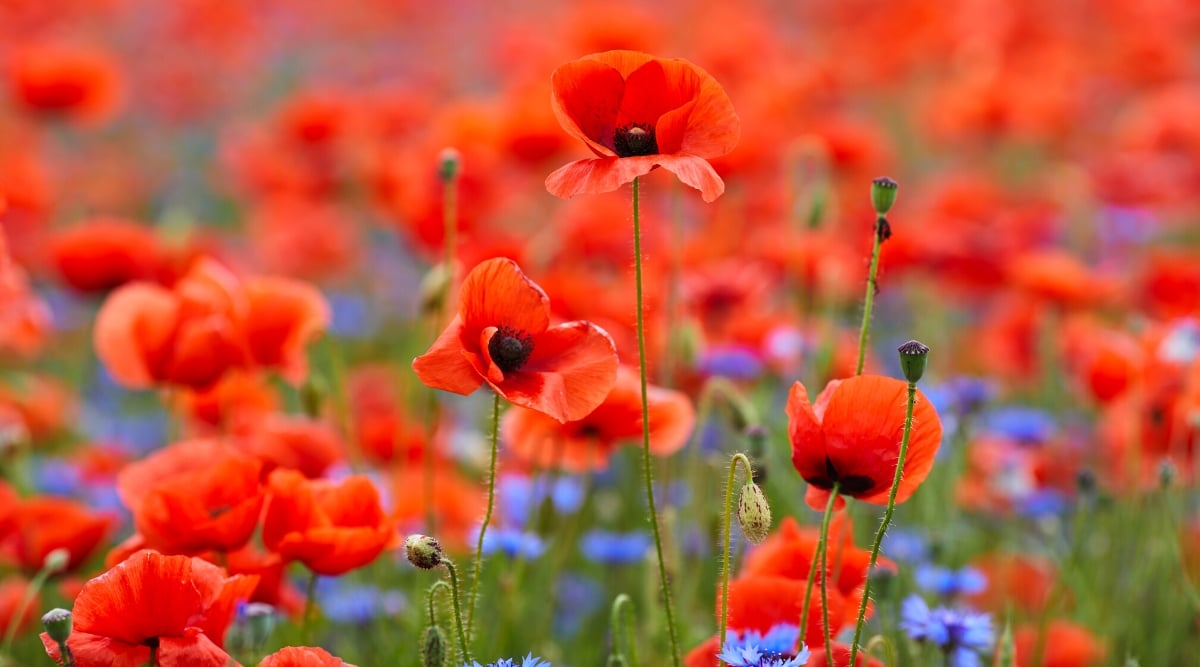
|
|
botanical name Papaver somniferum |
|---|---|
|
|
sun requirements Full sun to partial shade |
|
|
height 24”-36” |
|
|
hardiness zones 2-7 |
Poppies bring big, bold, gorgeous colors to the landscape, and most types self-seed freely and reliably. They make great cut flowers and are naturally deer-resistant and drought-tolerant. Plant your poppies in full sun and fertile, well-drained soil for the best results. The bowl-shaped flowers will attract pollinators and look stunning in a floral arrangement.
In addition to beautiful and unique flowers, poppies have quirky and attractive seed pods. Allow them to dry on the stems and either pop the tops off and give them a little shake or let nature run its course, and the wind will help to scatter your poppy seeds.
If you harvest the seeds, know that poppy seeds prefer to be directly sown, so no worries about starting seeds indoors. Just toss them in the garden in the fall and allow them to vernalize over winter.
Coreopsis

|
|
botanical name Coreopsis tinctoria |
|---|---|
|
|
sun requirements Full sun to partial shade |
|
|
height 24”-48” |
|
|
hardiness zones 2-11 |
For a mass of colorful blooms from summer through frost, coreopsis delivers every time. In warmer climates, they can even bloom well into the winter. Deadheading your plants will keep them producing bushels of blooms that draw pollinators like a magnet. To let them go to seed, simply let the flowers dry on the stem.
Coreopsis are versatile plants that can be happy in full sun or partial shade. Their stems will get a bit leggy in partial shade, but the flowers are very lightweight and don’t weigh down the slim stems. They are drought and heat-tolerant and make nice cut flowers, as well.
Alyssum
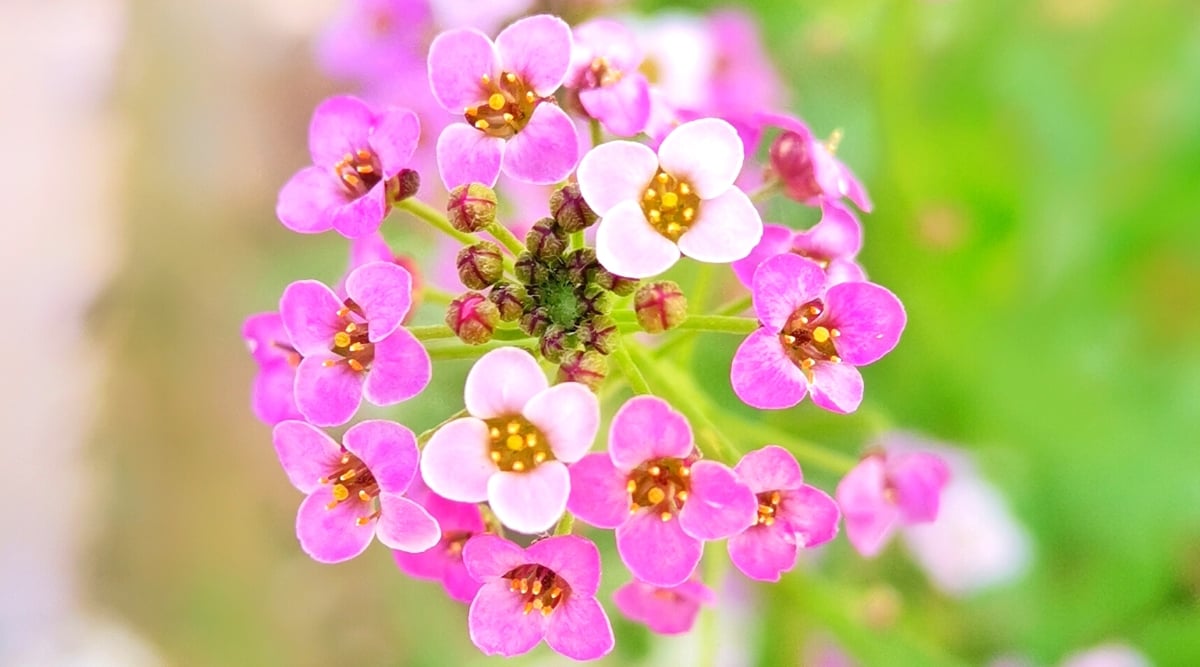
|
|
botanical name Lobularia maritima |
|---|---|
|
|
sun requirements Full sun to partial shade |
|
|
height 4”-9″ |
|
|
hardiness zones 5-9 |
Sweet alyssum is a delightful little plant that makes a wonderful ground cover. It can be grown as an annual in almost any climate, but it will reseed reliably in zones 5-9. Native to the Mediterranean region, alyssum begins blooming in spring and continues until the first frost. Planting them in a space with afternoon shade will keep them blooming through the hotter months.
Initially, plant your alyssum seeds in fall for blooms in late winter and an extra long blooming season. Newer varieties have been bred for increased heat and drought tolerance. Temperatures over 85°F (29°C) will start to slow down flower production, so a bit of afternoon shade in summer will help keep flowers on your alyssum.
China Aster
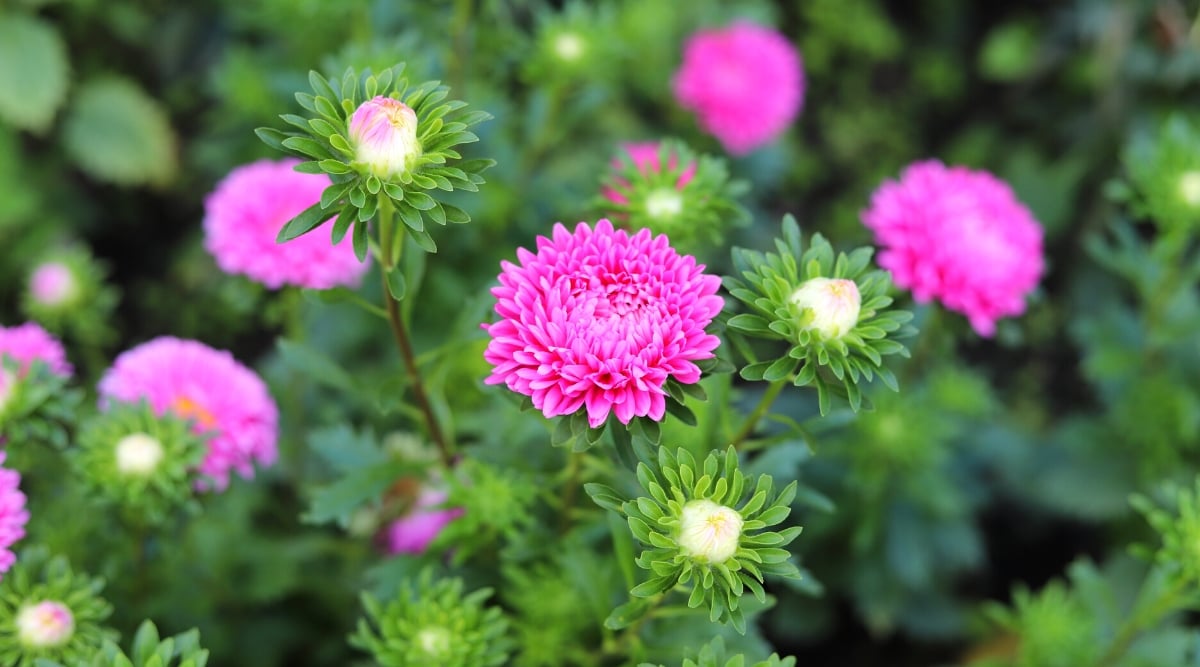
|
|
botanical name Callistephus chinensis |
|---|---|
|
|
sun requirements Full sun to partial shade |
|
|
height 24”-36” |
|
|
hardiness zones 2-11 |
China asters are fast growing and bloom for a long period, from late spring through the fall. Flowers are most commonly shades of purple or blue, but they can also be pink or white, depending on the variety.
Sow your seeds a week or two after the last expected frost, and after they sprout, give them some mulch to protect their shallow root systems. Asters like to be kept moist, so planting them in partial shade may help to keep them looking good during the heat of summer.
This plant can self-seed aggressively, so it’s a good idea to deadhead, leaving only a few flowers to go to seed at the end of summer. China asters have an excellent vase life, so cutting them for floral arrangements will help keep these plants in check and control how many plants you will have next season.
Bachelor’s Button
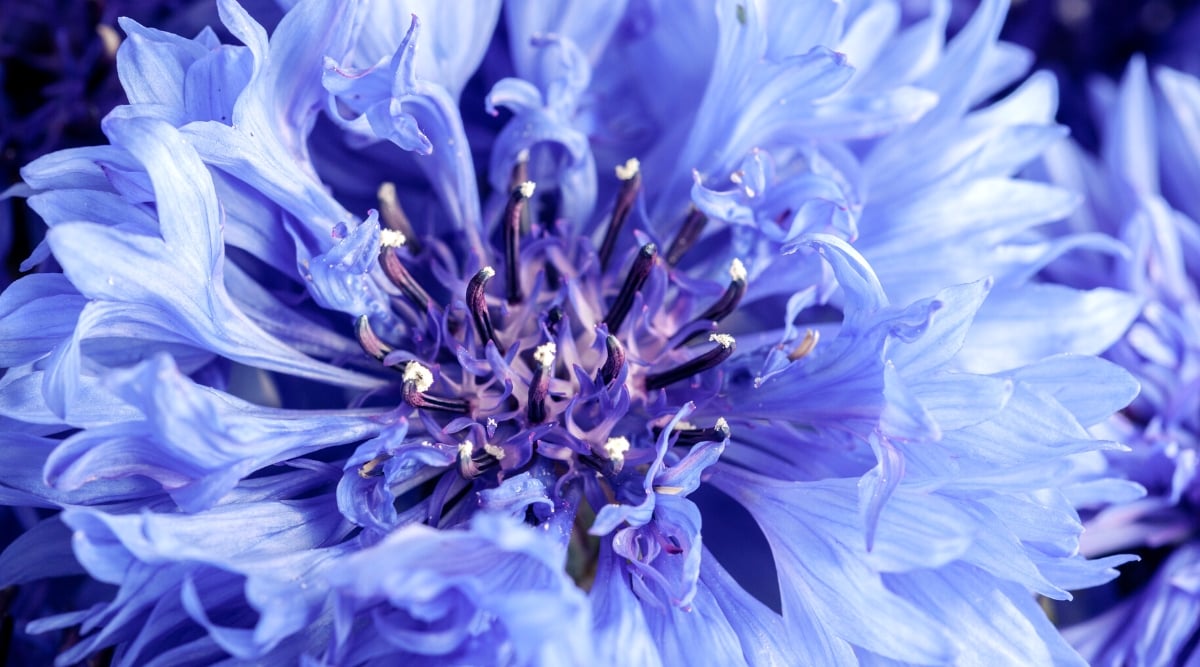
|
|
botanical name Centaurea cyanus |
|---|---|
|
|
sun requirements Full sun |
|
|
height 12”-36” |
|
|
hardiness zones 2-11 |
Also known as cornflowers, which is where the color cornflower blue originated, bachelor’s buttons are hardy little plants that can grow in a wide range of climates and soil types. They are drought tolerant, and while blue is certainly the most common color, it is far from exclusive. These flowers come in many shades of purple and pink, as well as white.
Bachelor’s button plants self-seed so well that they are considered invasive in some states, but they are quite pretty, and if they aren’t invasive in your area, they truly make a wonderful addition to the garden. They require little to no maintenance, and pollinators appreciate their presence, as well.
Calendula

|
|
botanical name Calendula officinalis |
|---|---|
|
|
sun requirements Full sun to partial shade |
|
|
height 1’-2’ |
|
|
hardiness zones 2-11 |
Calendula is a wonderful and useful plant that produces pretty orange and yellow flowers and attracts a host of beneficial insects to the garden. It is often referred to as pot marigold. However, the two are not closely related. The leaves and flowers are edible and are often used in salads or as garnish. A preparation made from the plant is also commonly used to treat cuts and scrapes. What a great little plant!
Calendula self-seeds well and sometimes escapes from the garden, but it will not overcrowd native plants, so it is not considered invasive. Plants are happy in full sun or partial shade and are quite drought-tolerant. The flowers are great for cutting, and deadheading will keep your calendula blooming all summer long.
Celosia
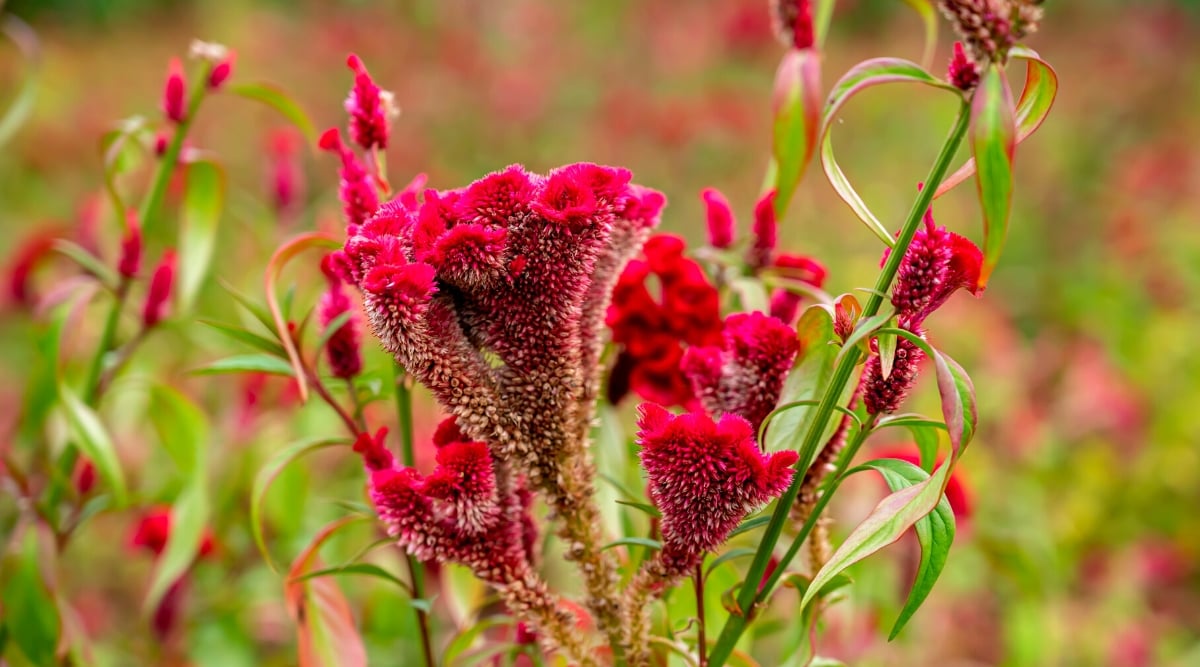
|
|
botanical name Celosia |
|---|---|
|
|
sun requirements Full sun |
|
|
height 4”-36” |
|
|
hardiness zones 2-11 |
If you’re not familiar with the name celosia, you’ve probably heard this plant referred to as Cock’s Comb due to the appearance of certain varieties. Other types of celosia produce flowers that are flamelike or resemble fuzzy little fingers. These amaranth relatives of amaranth look unique and make a statement in the flower garden.
Celosias make great cut flowers and add a really interesting element to a floral arrangement. Their leaves are edible and have a mild, spinach-like flavor when cooked. Celosia self-seeds freely, but the seedlings are easy enough to pull up wherever they are unwanted. Leaving them to go to seed will feed birds and your garden, too!
Dianthus
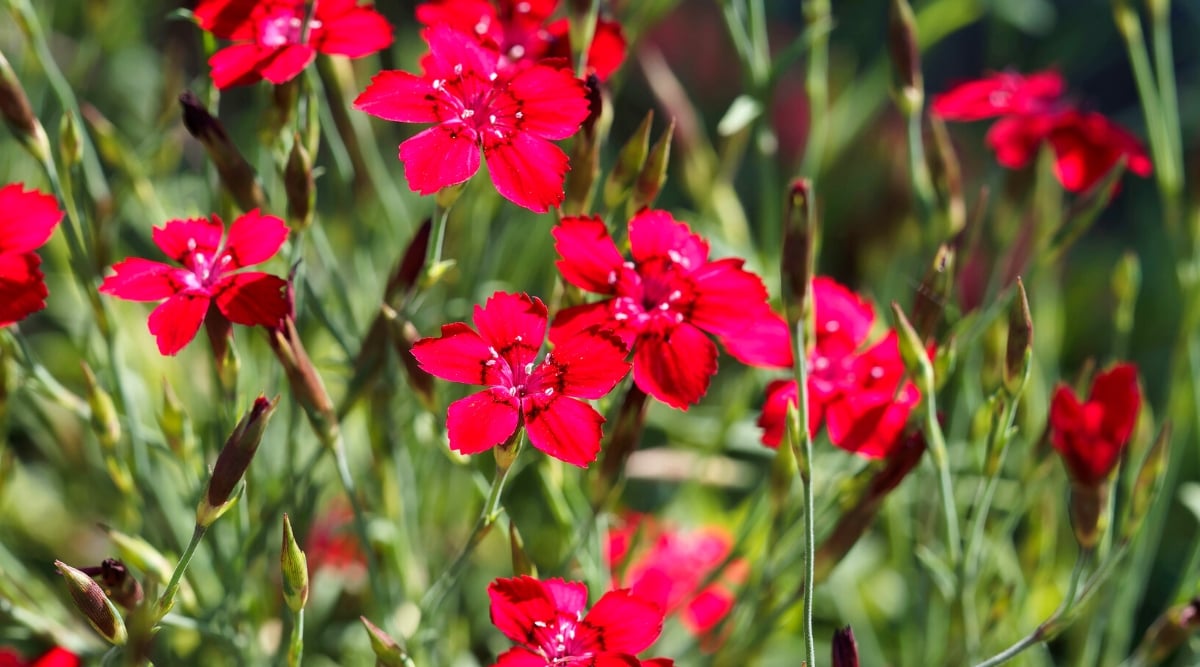
|
|
botanical name Dianthus |
|---|---|
|
|
sun requirements Full sun to partial shade |
|
|
height 4”-36” |
|
|
hardiness zones 4-9 |
Dianthus, a genus that includes the ever-popular carnation, is technically a short-lived perennial, but it is only reliably perennial in zones 6-9. Elsewhere, dianthus is a spicy-scented annual that can self-seed if its flowers are left on the plant.
It’s difficult because they make such excellent cut flowers, but it’s worth leaving a flower or two at the end of the season to see these beauties pop back up in spring.
These sturdy plants prefer full sun and well-drained soil. Most varieties have fragrant flowers, with clove-like being a common way to describe the aroma. Their pretty ruffled petals and ease of care have made these very popular garden plants.
Feverfew
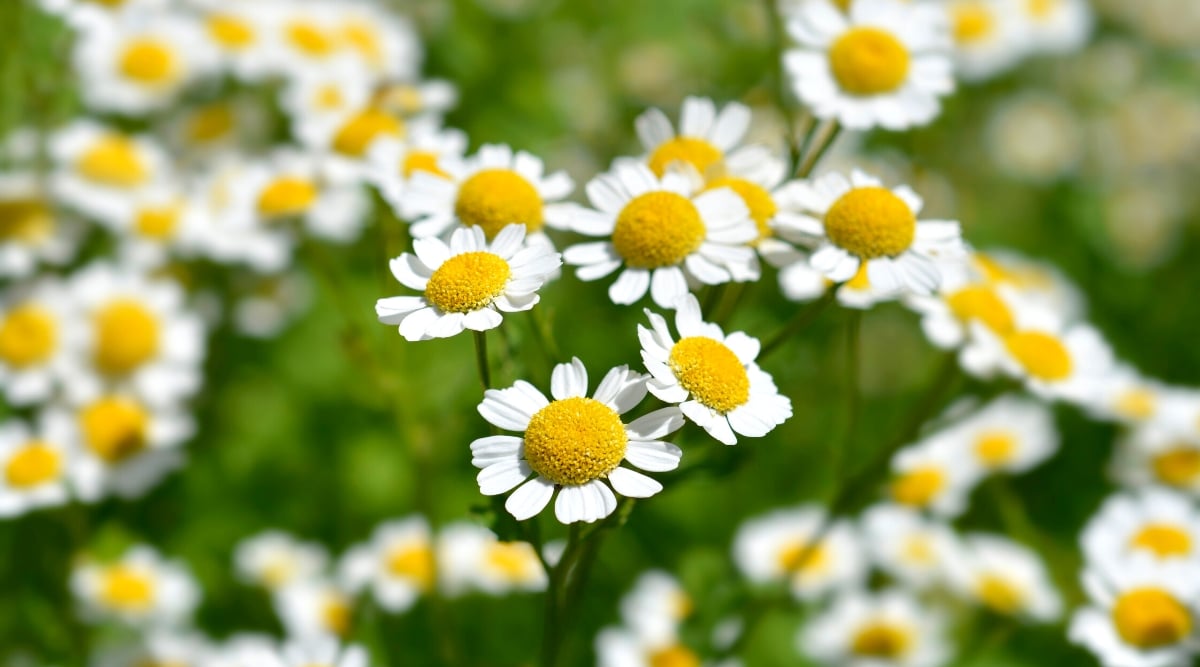
|
|
botanical name Tanacetum parthenium L. |
|---|---|
|
|
sun requirements Full sun |
|
|
height 1’-3’ |
|
|
hardiness zones 5-8 |
This sweet little flowering herb has been popular since its use in Victorian gardens. It is technically a short-lived perennial, so individual plants will leave for two to three years, but it self-seeds very well, so once you plant this herb in your garden, it will stick around for a long time. The masses of small white flowers on feverfew have earned it the nickname bride’s buttons.
Deadhead your feverfew throughout the summer to keep the flowers coming. The more you cut, the more this plant will produce. Feverfew will bloom from summer through the first frost, and if you leave some flowers on the plant near the end of the blooming season, it will self-seed nicely.
Marigold
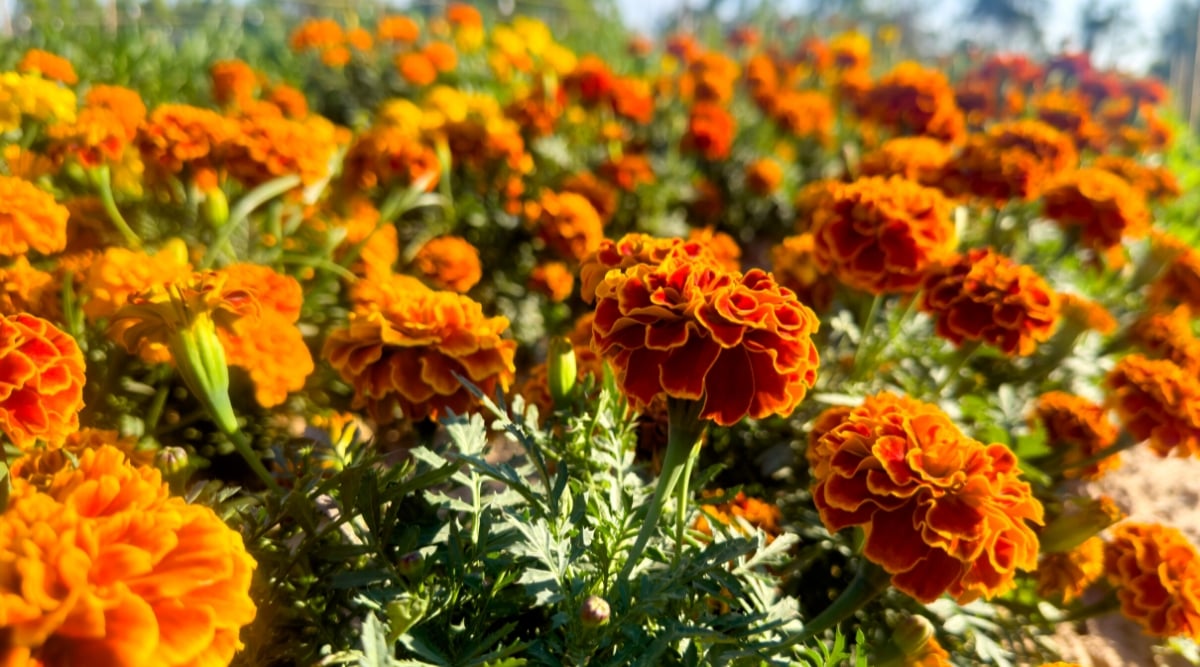
|
|
botanical name Tagetes |
|---|---|
|
|
sun requirements Full sun |
|
|
height 1′-4′ |
|
|
hardiness zones 2-11 |
Marigolds are a much-loved garden staple. These phenomenal flowers are great for adding color to the garden, and they repel some types of flies that can be harmful to other plants. In addition to their functional and ornamental usefulness, marigolds are also edible and make a stunning garnish or addition to baked goods.
We don’t typically consider marigolds self-seeding, but they are indeed. A month before you expect the first frost, stop deadheading your marigolds and allow the seed heads to dry on the plant. They will burst open and drop their seeds, and you should see some baby plants pop up in spring.
Impatiens
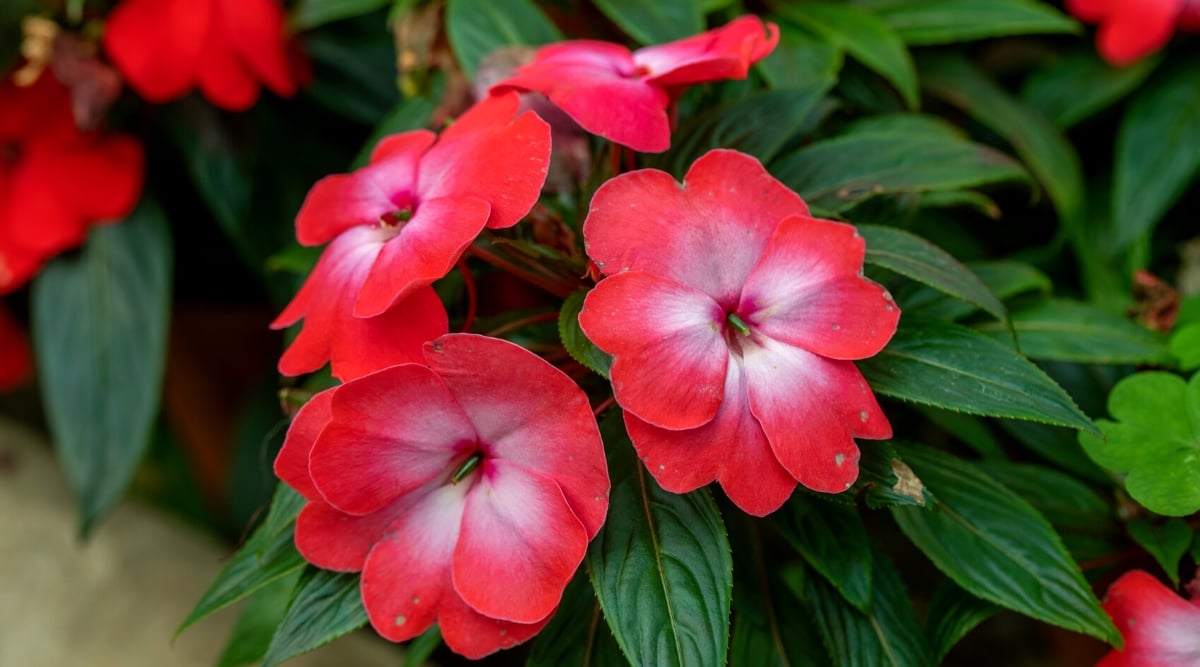
|
|
botanical name Impatiens |
|---|---|
|
|
sun requirements Full sun to full shade |
|
|
height 6”-30” |
|
|
hardiness zones 2-11 |
Impatiens are attractive flowering plants that prefer partial shade and are perennial in zones 10-11, but elsewhere they will self-seed if their seed pods are left on the plant. Something to bear in mind with these plants is that hybrid varieties won’t always breed true, and you may get a few surprises in their place, but that can be a good thing.
These are mounding plants, and they are not aggressive about self-seeding. Impatiens look stunning in a mass planting. They need rich, moist soil, and in exchange, they will provide a great deal of color from summer until the first frost.
Petunia

|
|
botanical name Petunia |
|---|---|
|
|
sun requirements Full sun to partial shade |
|
|
height 6”-18” |
|
|
hardiness zones 2-11 |
Petunias are fast-growing, low-maintenance sun lovers that thrive in garden beds and containers. Sadly, they are only perennials in zones 10-11. They will, however, self-seed in cooler climates if you allow them to go to seed. Much like impatiens, hybrid varieties will not always breed true, so it’s difficult to say what your new flowers will look like.
With so many beautiful varieties available, there is a petunia for every garden. Petunias like fertile soil and a moderate amount of water. They bloom best in mild weather, so don’t worry if your petunias slow down their blooming mid-summer. They will bounce back when the weather cools off in fall.
Snapdragon
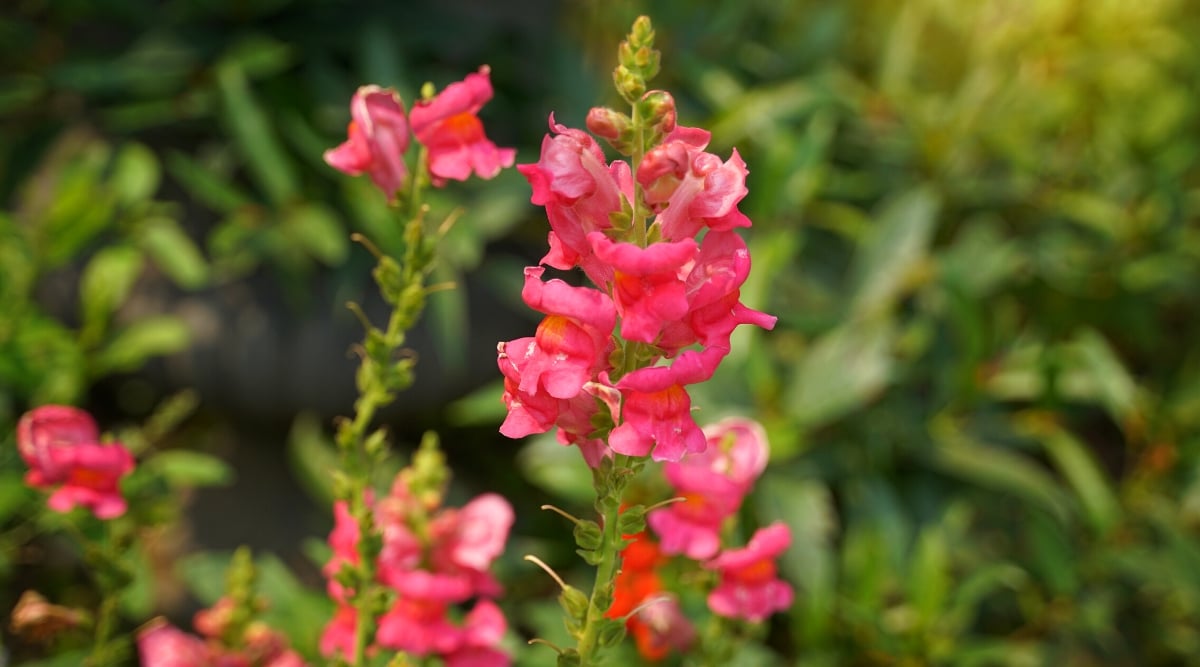
|
|
botanical name Antirrhinum majus |
|---|---|
|
|
sun requirements Full sun to partial shade |
|
|
height 6″-36″ |
|
|
hardiness zones 2-11 |
Snapdragons are tender perennials in zones 7-11 but may self-seed in cooler climates where they are grown as annuals. They are cool weather bloomers that prefer temperatures between 40°-70°F (4°-21°C) and will stop blooming for a time midsummer but usually bloom again in fall as long as they survive the hot summer weather.
Plant your snapdragons in partial shade with morning sun for best results. This will help to keep their roots cool during the hottest months. These plants are very resilient despite their delicate appearance and can even survive a light frost or two once established. They are one of my favorite flowers for the cutting garden.
Strawflower
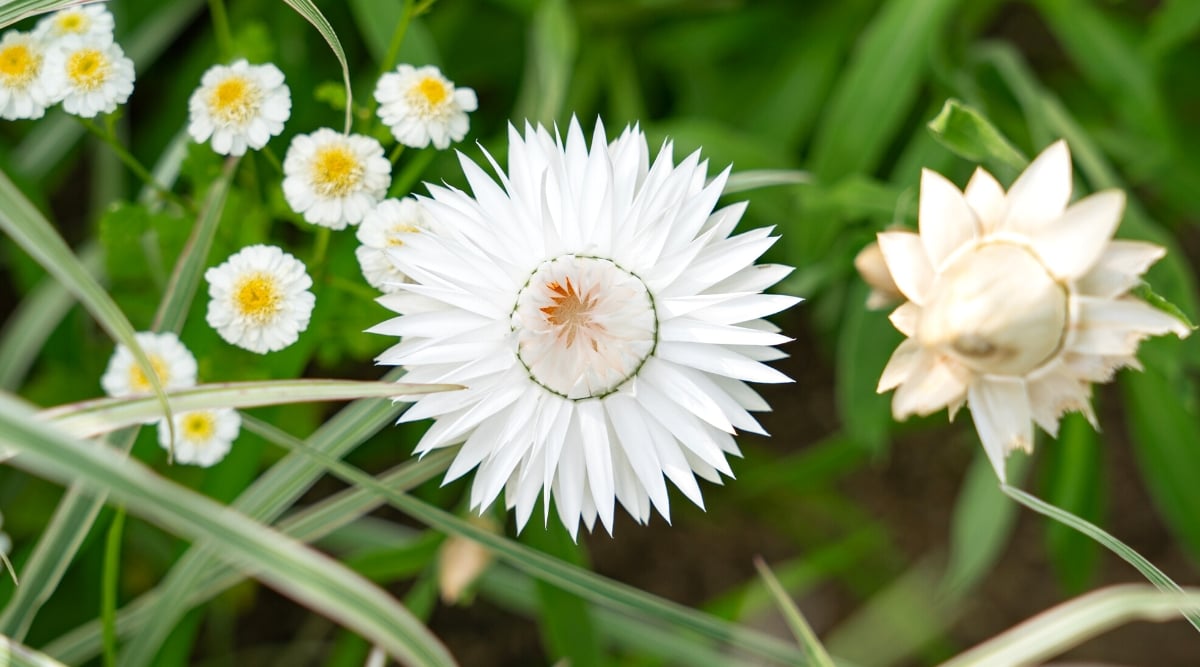
|
|
botanical name Xerochrysum bracteatum |
|---|---|
|
|
sun requirements Full sun to partial shade |
|
|
height 1′-5′ |
|
|
hardiness zones 2-11 |
Perennial in zones 8 to 11, strawflowers are a marvel with their unique, papery bracts that make excellent cut flowers and even better dried flowers. Strawflowers retain most of their color when dried. Plant your seeds in spring for blooms that start in early summer and continue until the first frost.
Strawflowers do self-seed and are most successful in mild climates, although they may still seed themselves in cold climates if they don’t have to contend with weather that is cold and wet. These plants prefer dry weather and average, well-drained soil.
Sweet Pea
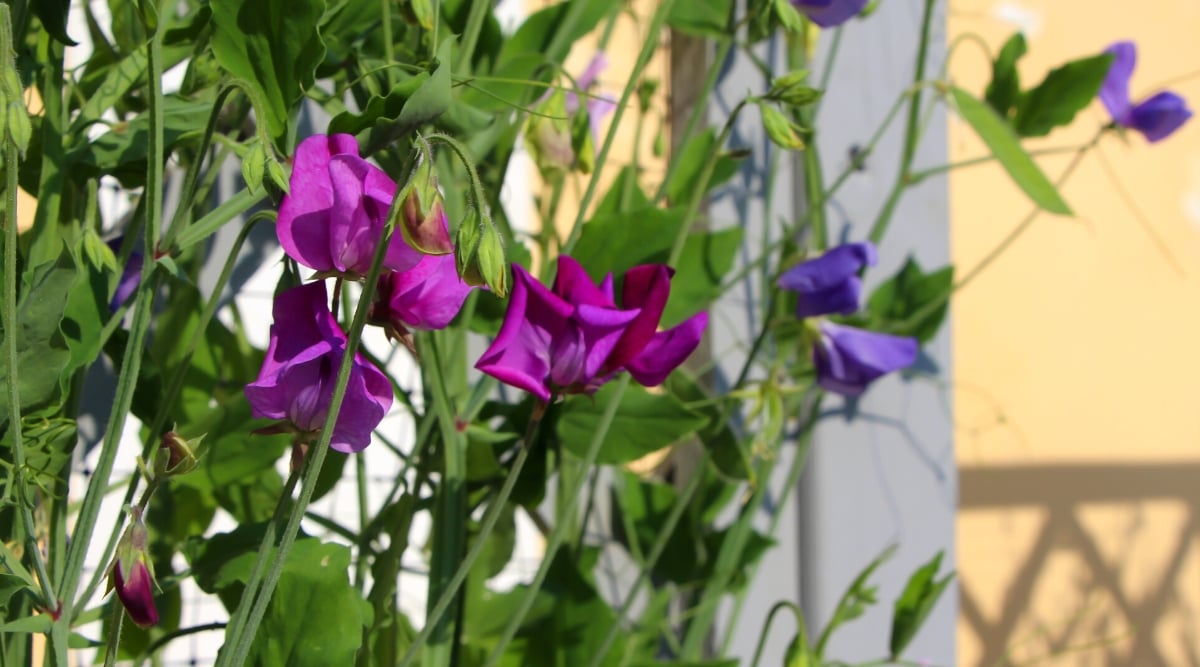
|
|
botanical name Lathyrus odoratus |
|---|---|
|
|
sun requirements Full sun to partial shade |
|
|
height 4′-6′ |
|
|
hardiness zones 2-10 |
Sweet peas might surprise you with their amazing cold tolerance. However, they are annuals in all zones. They self-seed very well, though, and all you really need to do is leave a few flowers to dry on the vine. In mild climates, sweet pea seeds may sprout in late fall and grow through the winter, as they can tolerate temperatures as low as -5°F (-21°C).
These climbing vines like to have a structure to climb, and they flower prolifically from early spring until early summer. Cutting the flowers or deadheading will help to control how aggressively this plant reseeds itself. The flowers smell wonderful and have a great vase life.
Hyacinth Bean
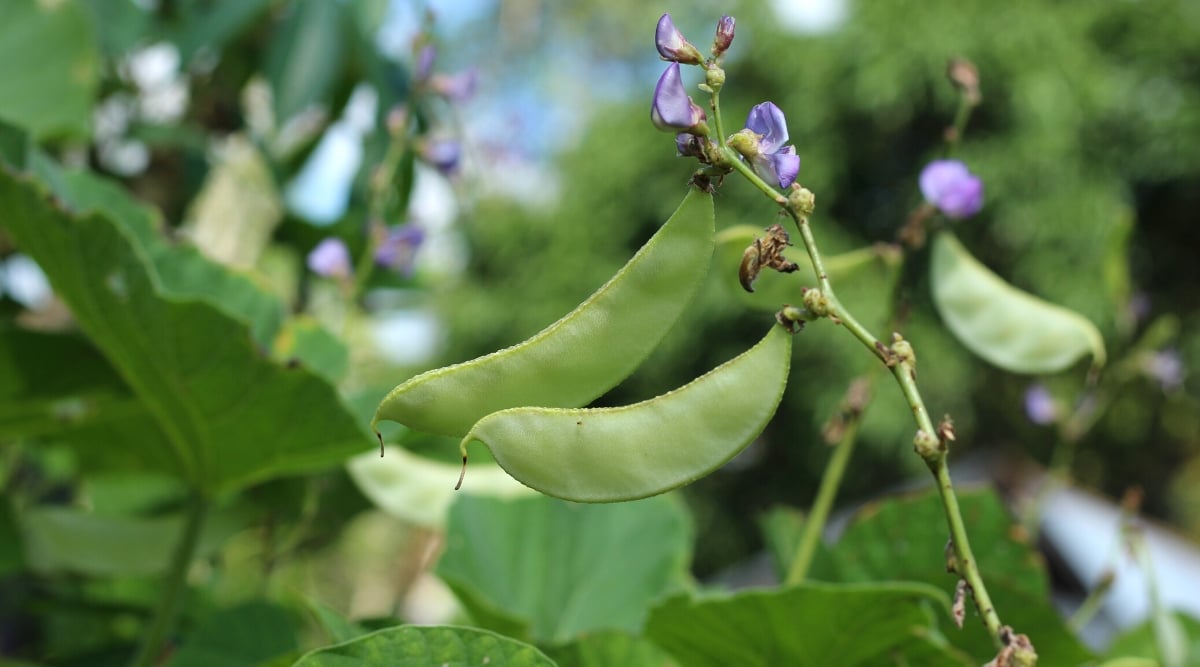
|
|
botanical name Lablab purpureus |
|---|---|
|
|
sun requirements Full sun to partial shade |
|
|
height 10’-25’ |
|
|
hardiness zones 2-11 |
This is one of my favorite flowering vines because of its amazing vigor and heat tolerance. I garden in zone 9, and things get pretty steamy here in summertime. Hyacinth bean stands up to heat and drought and produces the prettiest purple flowers that smell great and look great in a floral arrangement.
You can plant hyacinth beans just about anywhere. I’ve pulled up volunteers and transplanted them with tons of success. They do self-seed aggressively, but the seedlings are easy to spot with their purple stems and veining on deep green leaves. Removing most of the seed pods will help to control the spread if you only want a few vines.
Amaranth
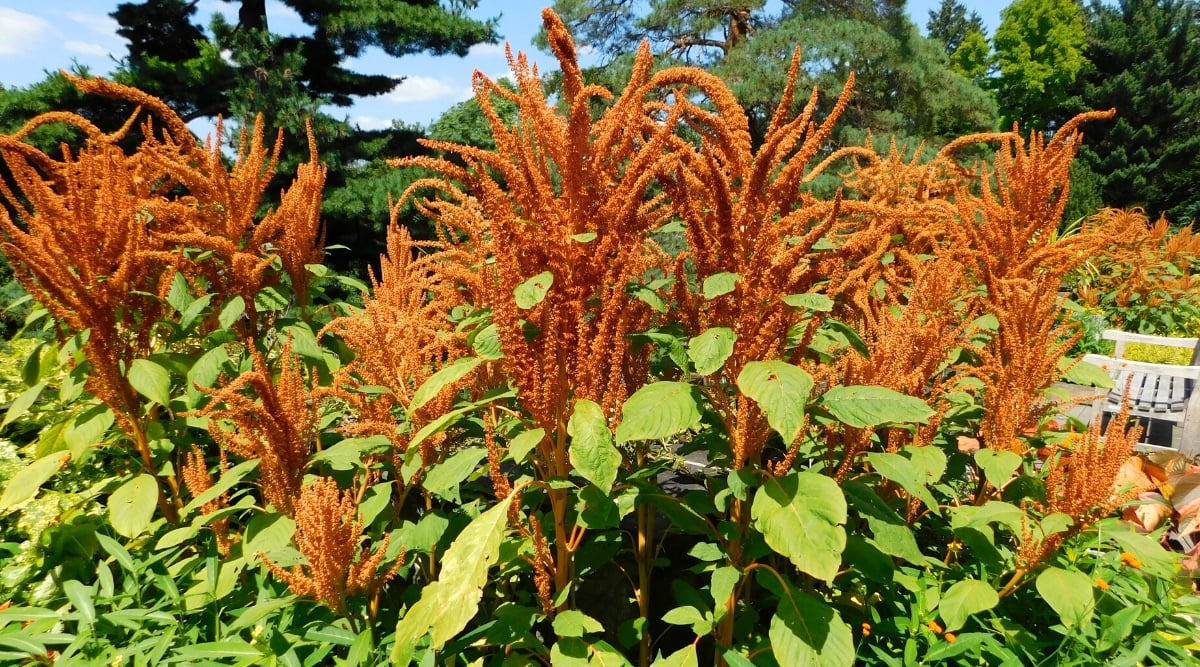
|
|
botanical name Amaranthus |
|---|---|
|
|
sun requirements Full sun |
|
|
height 2′-8’ |
|
|
hardiness zones 2-11 |
Amaranth is commonly grown as a food source, but there are wonderful ornamental varieties as well. The young leaves are edible, and some varieties, like Burgundy, have gorgeous garnet-colored leaves that make an impression when added to a salad or sauteed. The flowers are large and have a fuzzy texture.
If left on the plant to dry, the flowers will go to seed, and they self-seed well. Plant these in a spot where other, smaller plants won’t have to compete for nutrients. Most varieties grow quite large, and they are heavy feeders. They make a spectacular cut flower, and the seeds are edible as well.
Borage
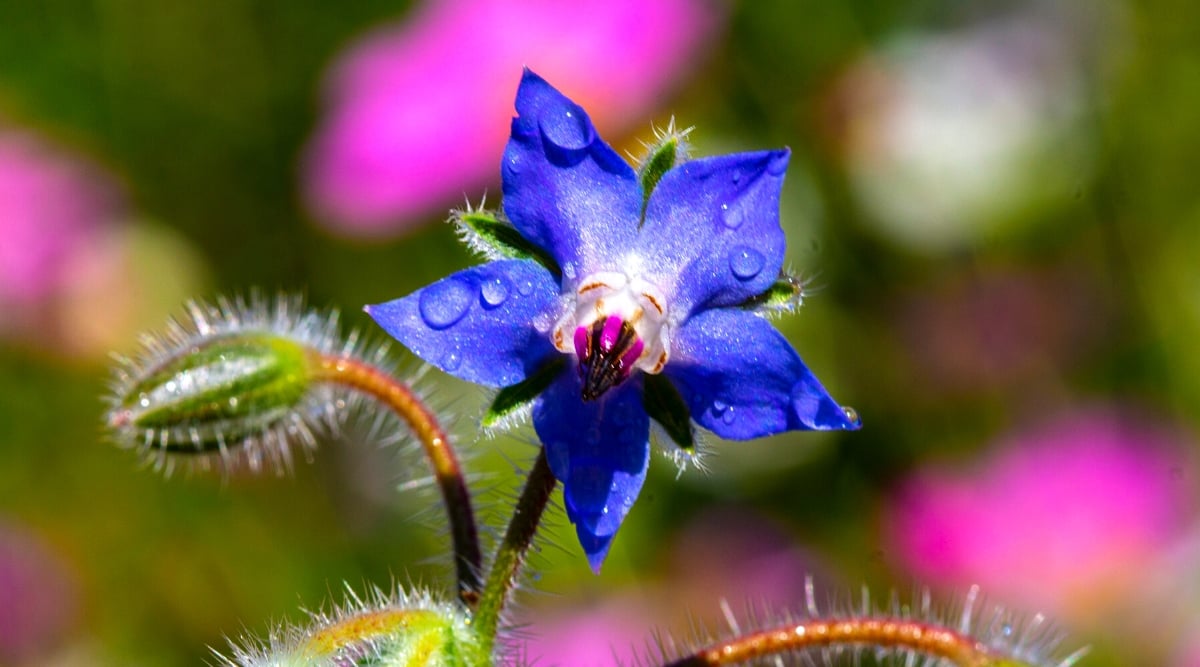
|
|
botanical name Borago officinalis |
|---|---|
|
|
sun requirements Full sun to partial shade |
|
|
height 1’-3’ |
|
|
hardiness zones 2-11 |
Borage is another self-seeding plant with edible flowers. In this case, those flowers have a mild cucumber flavor, and they are commonly sugared and used as garnish for baked goods. The bright blue flowers are also a favorite for many species of bees, making it an excellent addition to the pollinator garden.
Plant your borage seeds in full sun to partial shade. This plant isn’t picky about soil and rarely needs fertilizer. It does self-seed aggressively in some climates, so deadheading will help prevent more borage than you know what to do with. The leaves are also edible but are best picked young as they get a bit hairy as they mature.
Viola
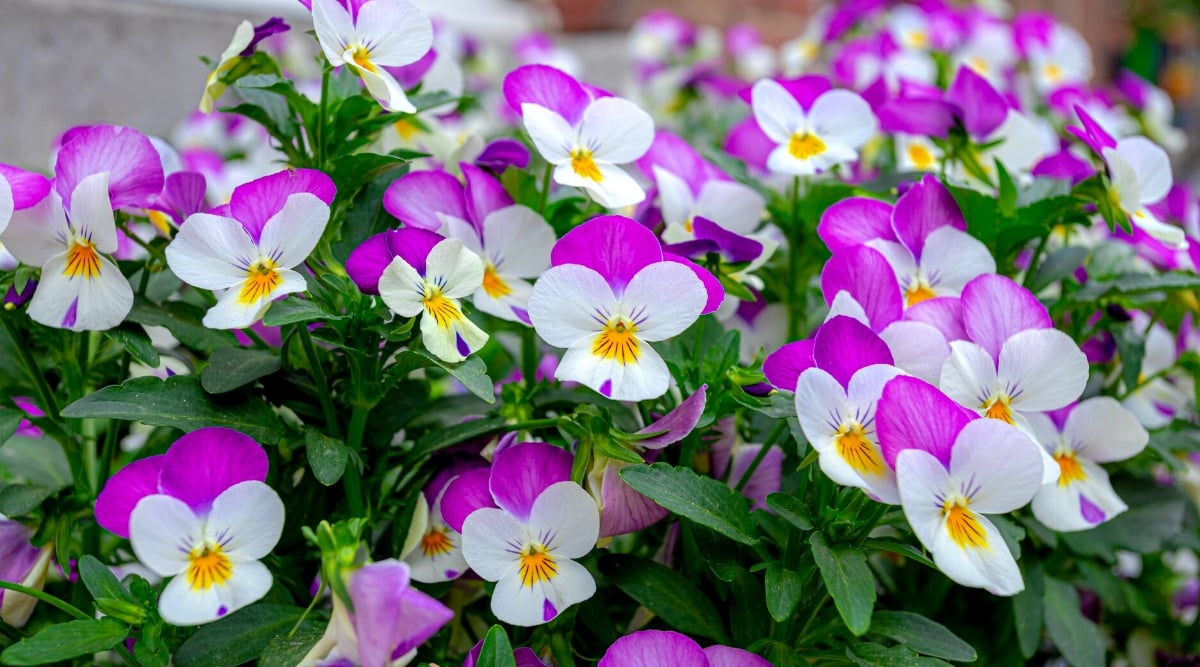
|
|
botanical name Viola |
|---|---|
|
|
sun requirements Full sun to partial shade |
|
|
height 3”-12” |
|
|
hardiness zones 3-8 |
Violas are cool-weather flowering plants that have edible flowers and surprisingly good frost tolerance. In fact, these flowers will keep blooming in temperatures as low as 0°F (-18°C). They can continue to bloom in summer if given enough shade, but they much prefer the cooler temperatures of spring and fall.
Plant your violas in containers or the ground in rich, loamy, moist soil that is slightly acidic. The more you cut the flowers, the more the plant will produce. Some varieties have long, straight stems and make beautiful cut flowers with a pleasant fragrance. Violas self-seed readily.
Nasturtium
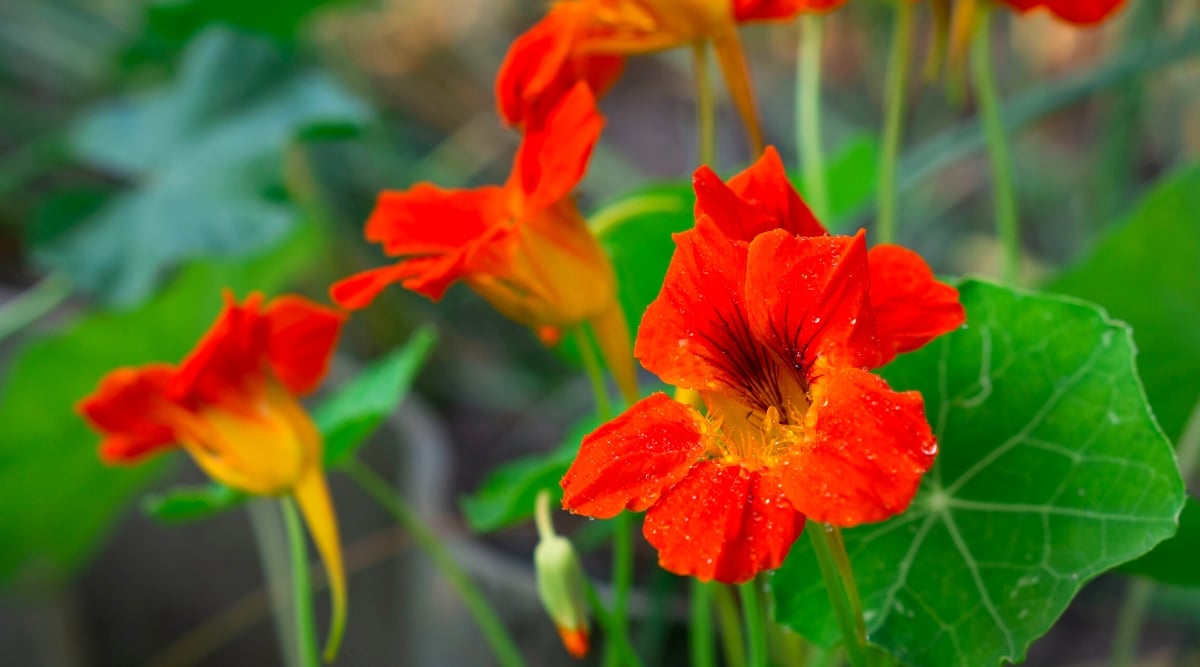
|
|
botanical name Tropaeolum majus |
|---|---|
|
|
sun requirements Full sun to partial shade |
|
|
height 1’-10’ |
|
|
hardiness zones 2-11 |
If edible flowers are your thing, nasturtium is a plant you’ve just got to have in your garden. In our opinion, the large, colorful, delicate flowers belong in every salad bowl. The attractive leaves resemble lilypads, and are edible as well. They have a green and peppery flavor. Nasturtiums are fast-growing and sturdy, and while people like to eat them, rabbits and deer do not.
Nasturtiums work well in the ground or a container and look lovely spilling over the edge of a raised bed. They attract pollinators and make great companions in the vegetable garden. Plant in spring as soon as the ground is workable, and you will have flowers from spring until the first frost. If you leave the seed pods at the end of the season, this plant will self-seed readily.
Sunflower
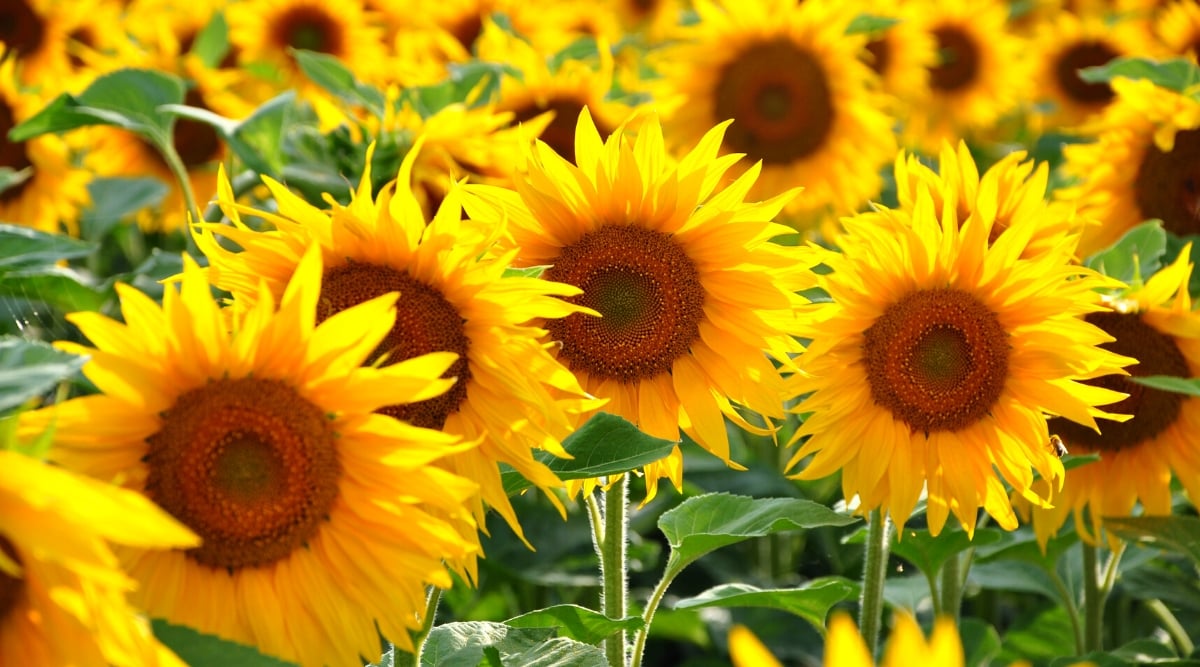
|
|
botanical name Helianthus annuus |
|---|---|
|
|
sun requirements Full sun |
|
|
height 1′-10′ |
|
|
hardiness zones 2-11 |
These summer beauties tower over the garden, beckoning for bees to come visit and help all of your other flowers grow. From the small to the very tall, sunflowers make a statement, and they make amazing cut flowers, too. Sunflowers are edible to humans and animals and can be prepared in some delicious ways.
Sunflowers self-seed quite well. The only issue you might run into is that everyone loves to snack on sunflower seeds. If you’ve ever tried growing sunflowers from seed, you’ve probably learned the hard way the lengths to which squirrels will go to find these seeds. If you can manage to keep birds and other critters away through the winter, you might see some sunflowers popping up in spring.
Flowering Tobacco
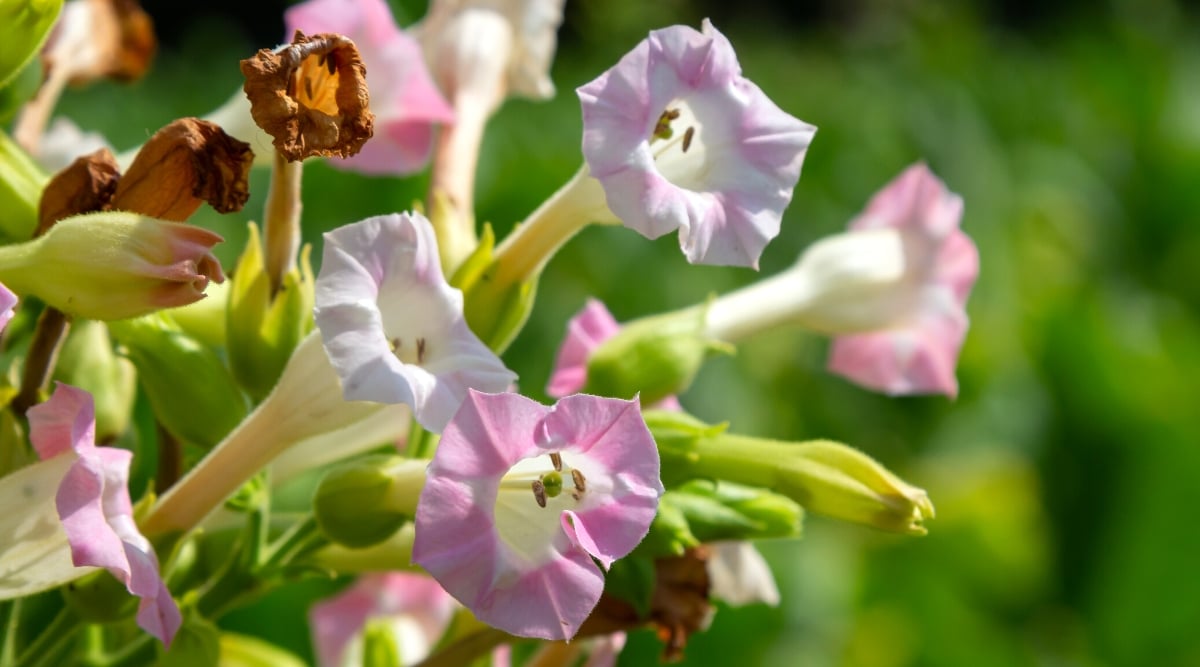
|
|
botanical name Nicotiana |
|---|---|
|
|
sun requirements Full sun to partial shade |
|
|
height up to 8’ |
|
|
hardiness zones 2-11 |
Who knew tobacco flowers were so delightful? Flowering tobacco is a lovely annual that produces a great number of star-shaped, wonderfully fragrant flowers from summer through fall. The plant is perennial in zones 10-11 only and grown as an annual elsewhere, but it does self-seed. Allowing it to go to seed is the best way to keep this plant in your garden.
Flowering tobacco will bloom best in full sun but can survive in partial shade. The flowers come in shades of white, yellow, green, red, and pink, and most types are strongly scented. They prefer rich soil, taking in a lot of nutrients, and they self-seed readily. The seedlings are easy to find and pull if this plant gets out of hand.
Viper’s Bugloss
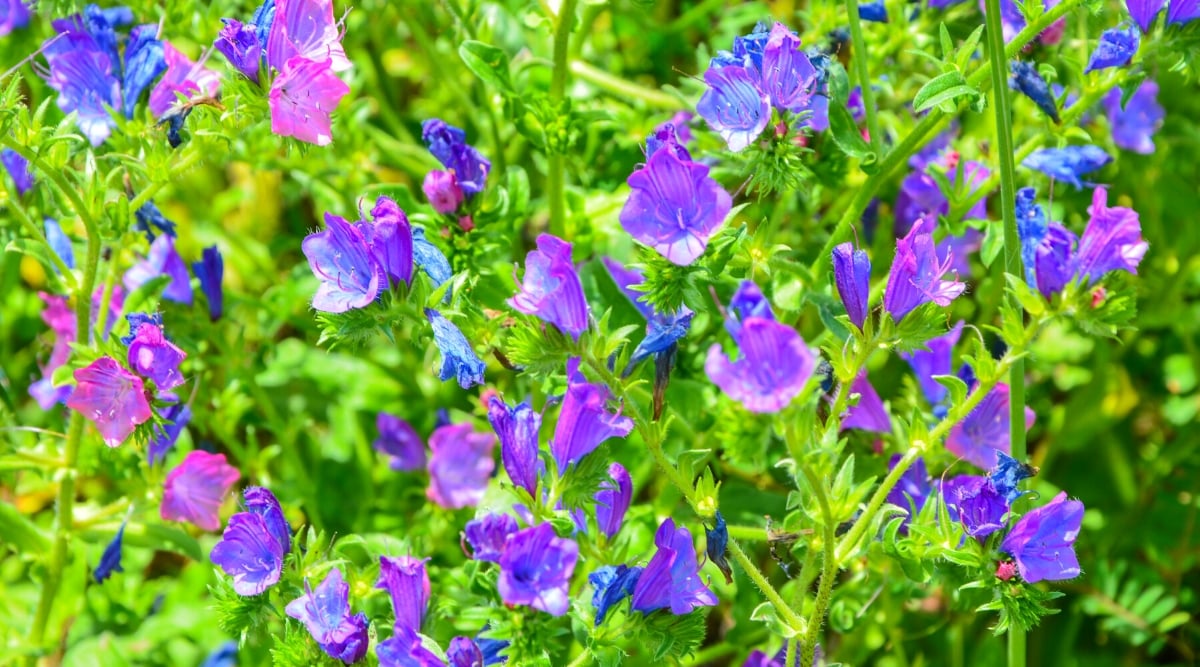
|
|
botanical name Echium vulgare |
|---|---|
|
|
sun requirements Full sun |
|
|
height 1’-3’ |
|
|
hardiness zones 4-8 |
This close relative of borage has similar, signature blue flowers that are exceptionally attractive to bees, which see ultraviolet light. This plant continues producing nectar all day, as opposed to only in the morning, like most plants. This makes it one of the most popular plants where pollinators are concerned.
Much like borage, viper’s bugloss self-seeds readily, at times, maybe a bit too much. This is at least somewhat because of the plant’s attractiveness to bees. You can deadhead to cut down on the number of seeds dropped if you want to keep this plant in check.
Ursinia
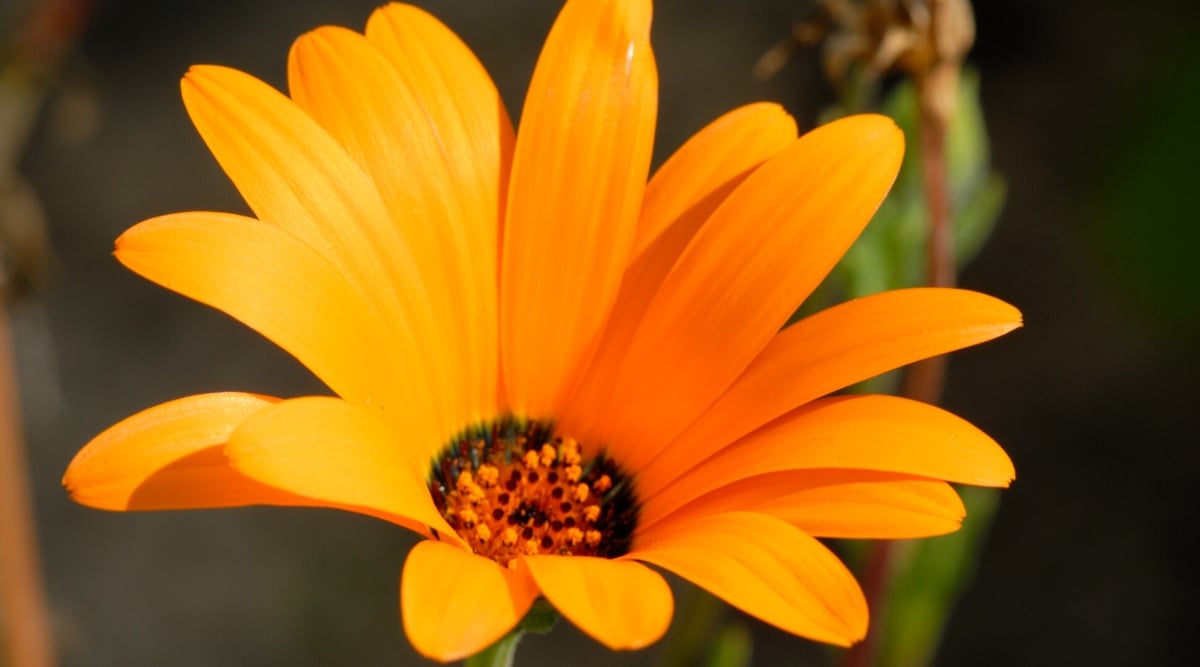
|
|
botanical name Ursinia |
|---|---|
|
|
sun requirements Full sun to partial shade |
|
|
height 1′-2′ |
|
|
hardiness zones 3-11 |
It’s surprising that ursinia is not a more well-known plant because it adds a ton of color to the garden and is exceptionally low maintenance. Planted in spring, this plant will be established by summer. It’s heat and drought-tolerant. It grows in a mound with fernlike foliage and brightly colored flowers that cover the plant for months in summer.
Plant your ursinia seeds in rich, well-drained soil and keep them moist until they are established. The flowers are bountiful and easily self-sow, so you are certain to see these plants return year after year.
Larkspur
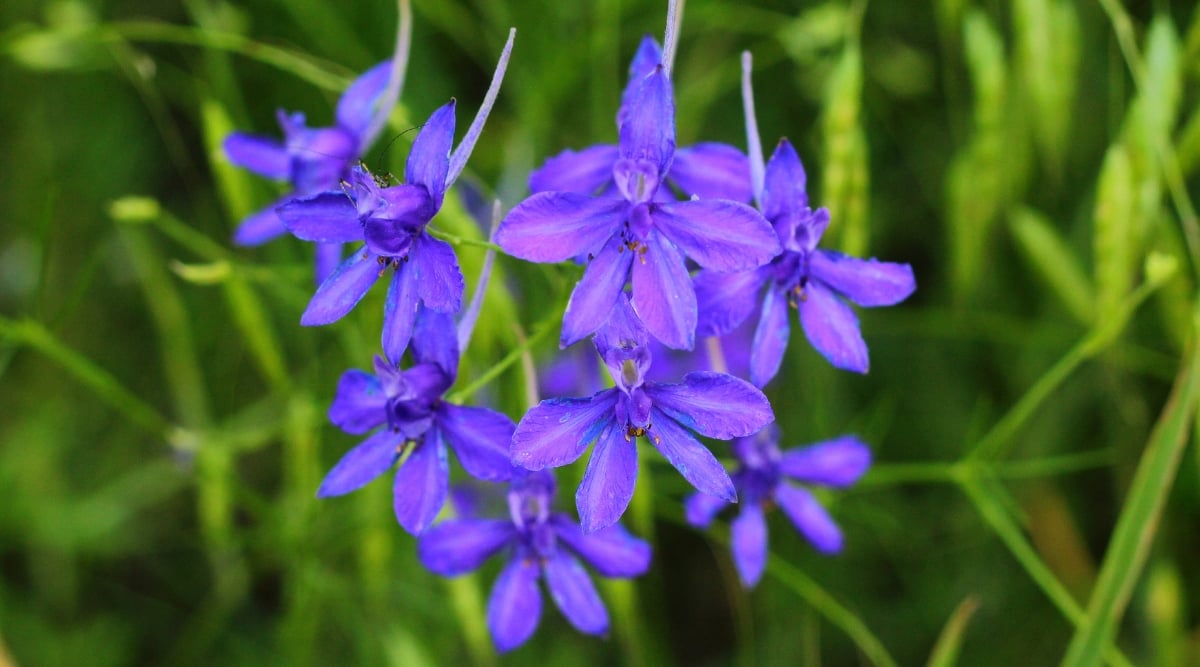
|
|
botanical name Consolida regalis |
|---|---|
|
|
sun requirements Full sun to partial shade |
|
|
height 2’-3’ |
|
|
hardiness zones 5-9 |
Larkspur is a lovely look-but-don’t-touch kind of flower. These tall, cool-colored flowering plants are toxic, so wear gloves when you plant them or deadhead them. Despite their toxic nature, larkspurs are quite beautiful to look at and self-seed readily.
If you want to keep self-seeding to a minimum, simply deadhead most of the flowers, only leaving a sprinkling of seeds on the plant to reseed for next year. Plant seeds as soon as the ground is workable for flowers that bloom in late spring and summer.
German Chamomile
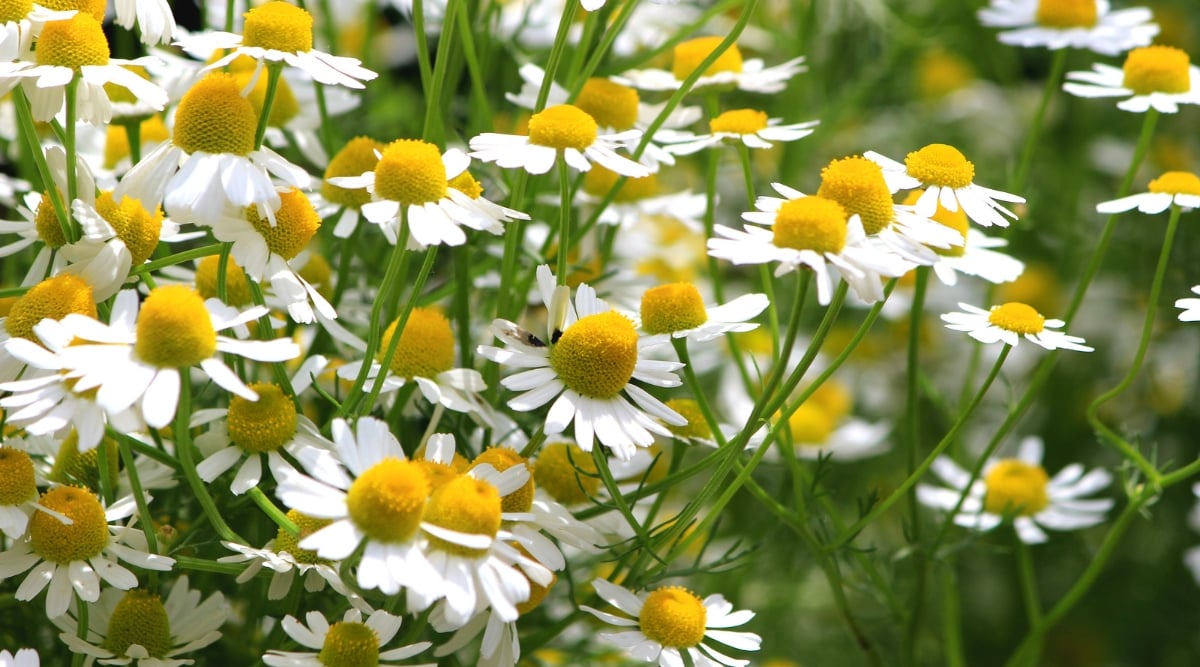
|
|
botanical name Matricaria recutita |
|---|---|
|
|
sun requirements Full sun |
|
|
height 1′-2′ |
|
|
hardiness zones 2-8 |
Chamomile is a great little plant to have. It has an amazing number of uses, from soothing teas to potpourri. It even makes a decent mosquito repellent when brewed like a tea and applied to the skin. The flowers dry nicely, and they make an excellent filler for cut flower arrangements.
Plant your seeds as soon as the ground is workable, but don’t bury seeds deeply. Lightly press them into the soil. These seeds need sunlight to germinate. They freely self-seed, and some types of chamomile are considered invasive, but German chamomile is not.
Black-Eyed Susan
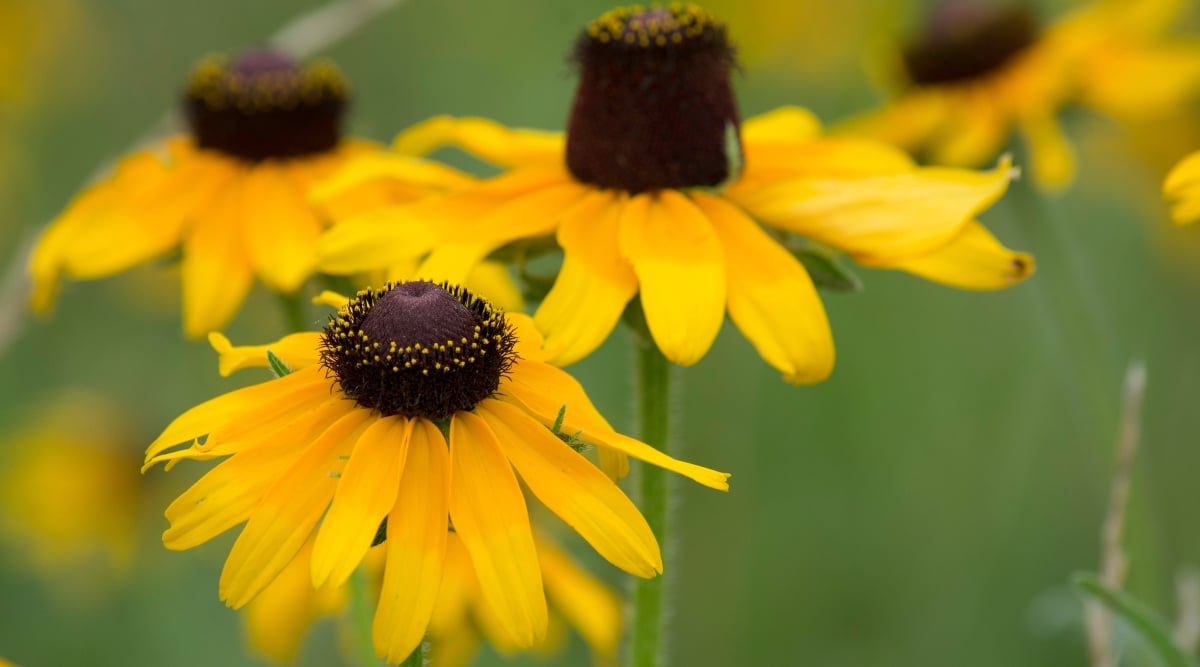
|
|
botanical name Rudbeckia hirta |
|---|---|
|
|
sun requirements Full sun |
|
|
height 2′-3′ |
|
|
hardiness zones 3-7 |
Black-eyed Susans are underrated, in my opinion. These are such incredible growers, and when planted in a sunny spot, they produce an amazing number of flowers in a relatively short time. Growing up to five feet tall, these plants branch out and beckon to droves of pollinators.
Perennial in zones 3-7, it will come back from the roots, and outside of that area, you can reliably expect these plants to self-seed. They make wonderful cut flowers, and the plants are so easy to care for. They are drought and heat-tolerant, as well.
Baby Blue Eyes

|
|
botanical name Nemophila menziesii |
|---|---|
|
|
sun requirements Full sun to partial shade |
|
|
height 4″-6” |
|
|
hardiness zones 2-11 |
This US West Coast native is a beautiful addition to a wildflower garden and makes a breathtaking groundcover. It’s nice in containers as a filler plant and is all-around a pretty little plant that stands out from other low-growing flowers. Only six inches tall, baby blue eyes are known for their glowing blue flowers with incandescent, white throats.
Baby blue eyes bloom between spring and summer when there is a lull between the cool and warm weather plants. It can be planted in full sun or partial shade, though it flowers most profusely in full sun. Under the right conditions, this plant self-seeds and can become a lovely colony.
Love-in-a-Mist
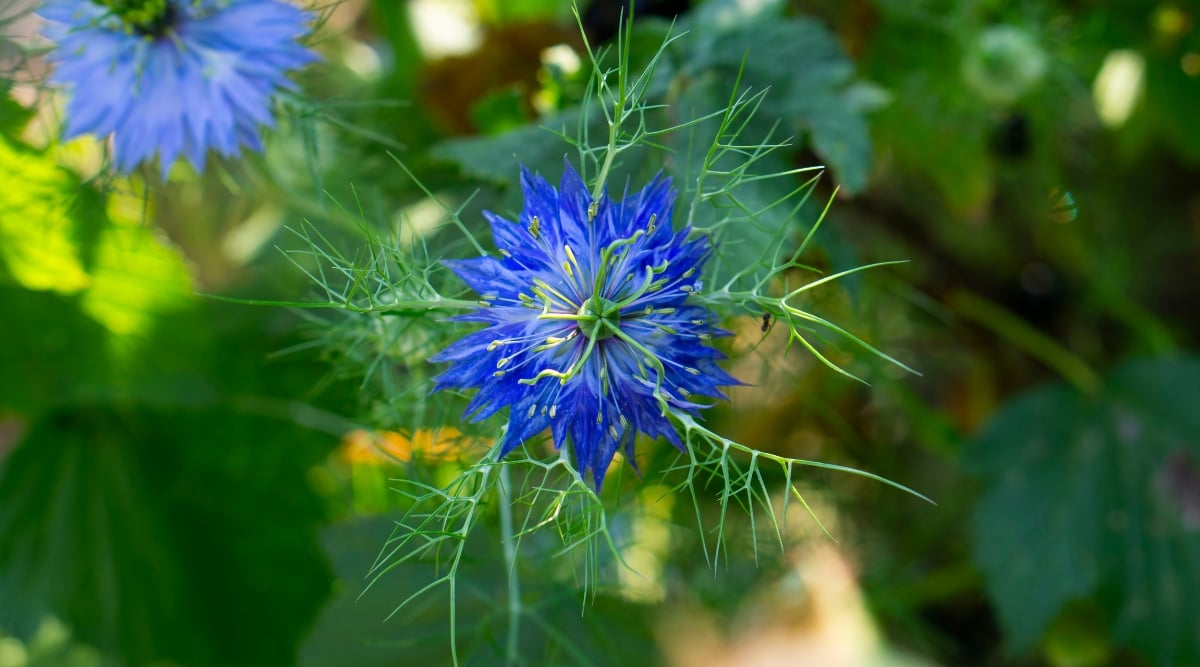
|
|
botanical name Nigella papillosa |
|---|---|
|
|
sun requirements Full sun |
|
|
height 24”-36” |
|
|
hardiness zones 2-11 |
This last flower is a quirky and fun flower, but it is not edible, so don’t let curious pets near this one. Love-in-a-mist gets its name from the feathery foliage that stands out around the flowers. The foliage is delicate and lovely, adding a lot of texture to the flower bed. The flowers can be pink, purple, and white, but the most popular shade is blue.
Love-in-a-mist makes a great addition to the cut flower garden and is perfect for a prairie or wildflower garden. It flowers best in full sun but will grow in partial shade. If planted in fall in mild climates, you will see blooms from spring through fall. The summer heat may cause them to stop blooming for a time.
Final Thoughts
With all of these stunning self-seeding annuals, who can choose? Selecting self-seeding plants for your garden can save a lot of time and money that would be put into replacing other non-self-seeding annuals year after year. Just remember to leave some flowers on your self-seeding plants at the end of the season and keep a lookout in the spring for new plants!

